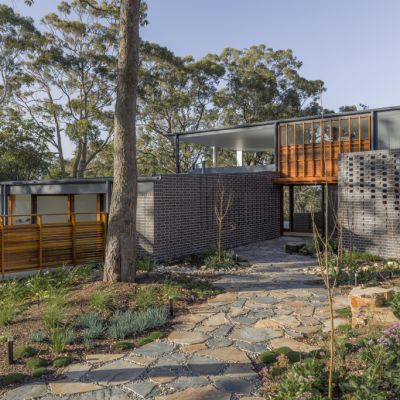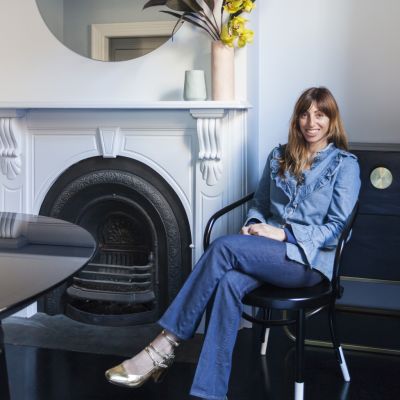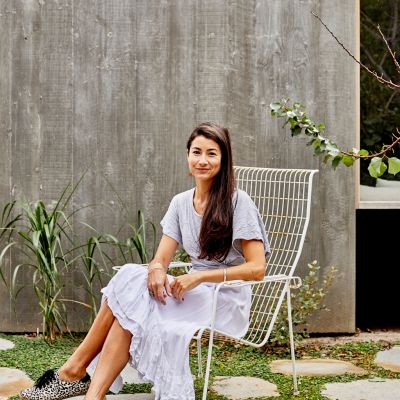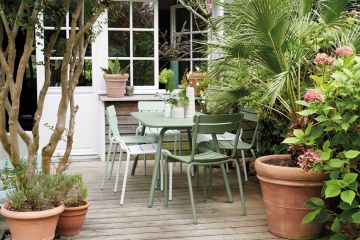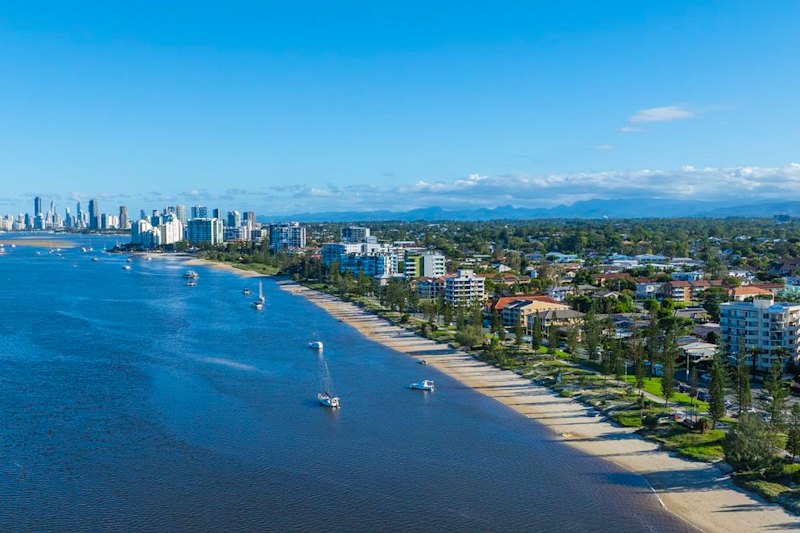A flash of inspiration: The pyrotechnic artwork of Cai Guo-Qiang
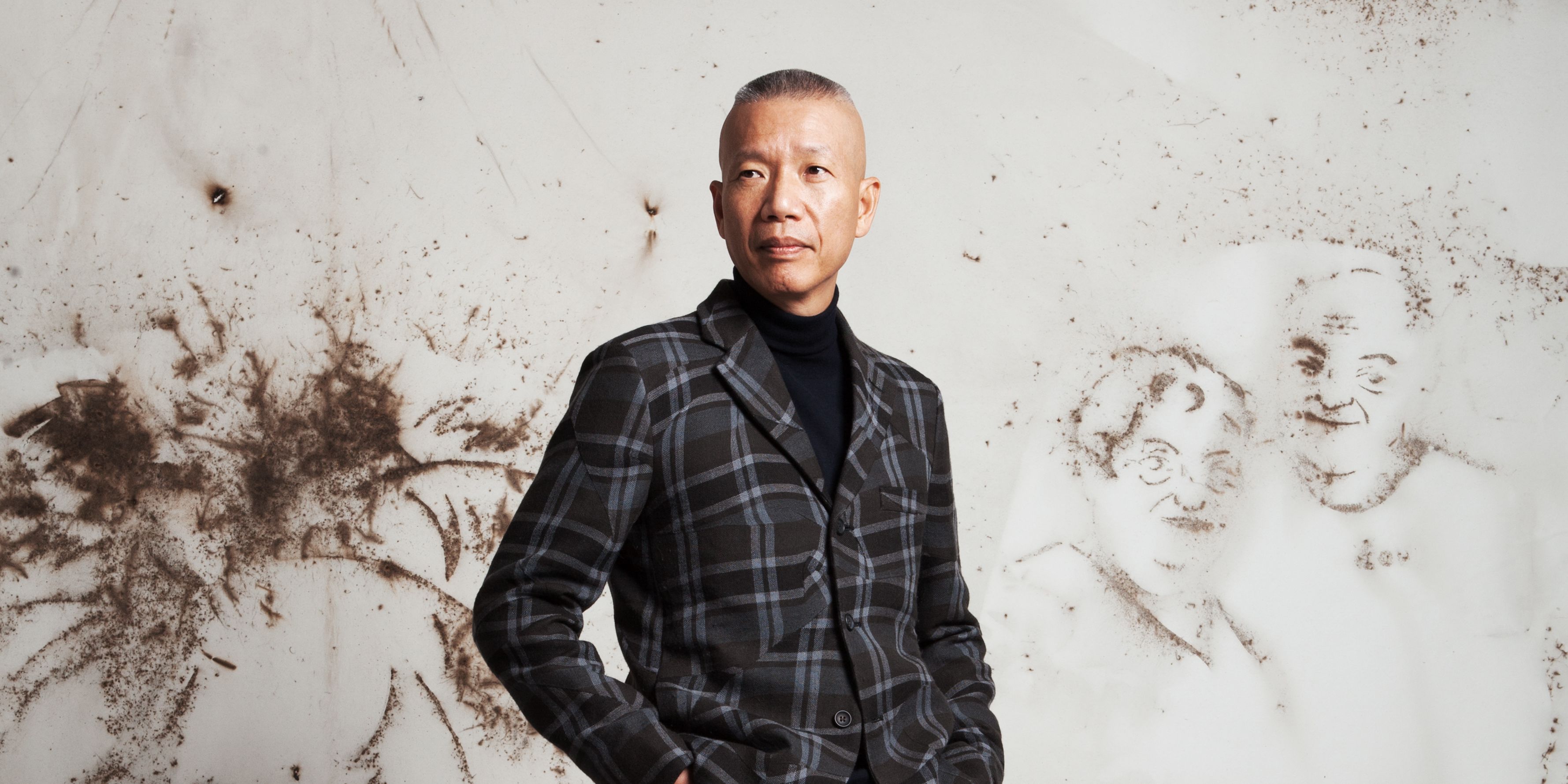
There are few people who will ever know what it’s like to live in a home designed by one of the world’s most famous architects, Frank Gehry. But one person who does is his friend, artist Cai Guo-Qiang.
The two met when Cai had a solo show in 2009 at Guggenheim Bilbao in Spain, and Gehry took note of the artist’s installation, Head On, in which 99 replica wolves appeared to be leaping skyward in an arc before crashing into a transparent wall. A connection was formed between the men immediately.
Cai says that his friendship with Gehry stems from the fact that “I have the heart of a child. Frank is the same … He loves me very much, even though he’s almost 30 years older than me. He’s my example. I need to learn from him.”
When Cai was looking for a space to both work and spend time with his wife and two daughters, he called upon Gehry. The resulting New Jersey house (designed in collaboration with Gehry’s former student Trattie Davies) was once owned by an Olympic equestrian; as such, it includes a renovated horse barn that has been transformed into an artist’s studio.
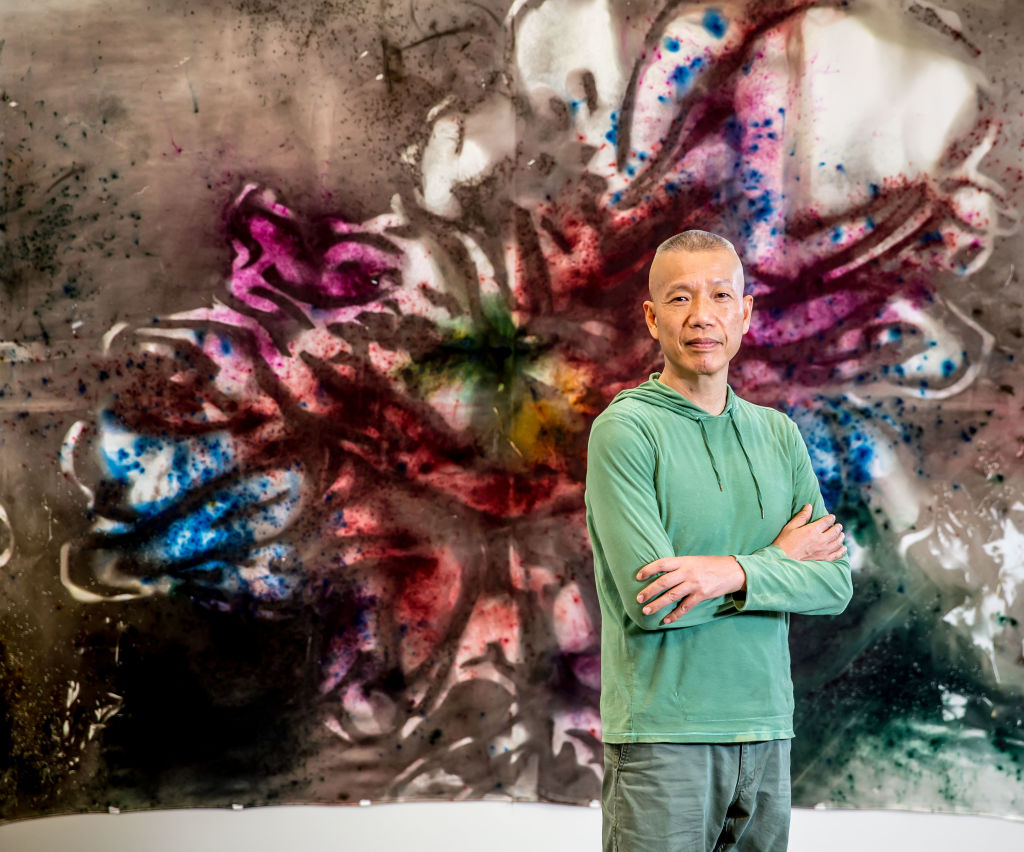
And it’s not just any artist’s studio that’s required when you consider that Chinese-born, New York-based Cai has become best known for his brand of both pyrotechnics and “gunpowder art,” making him the subject of a Netflix documentary, Sky Ladder. In March, Melbourne got to witness this first hand when Cai set a Williamstown warehouse space alight with gunpowder.
The work began as scattered coloured gunpowder over sheets of silk, covered with a stencil that Cai had created. Once alight, the explosion left behind gunpowder residue seared in peony designs, becoming a part of the National Gallery of Victoria’s exhibition Cai Guo-Qiang: The Transient Landscape, presented in conjunction with Terracotta Warriors: Guardians of Immortality.
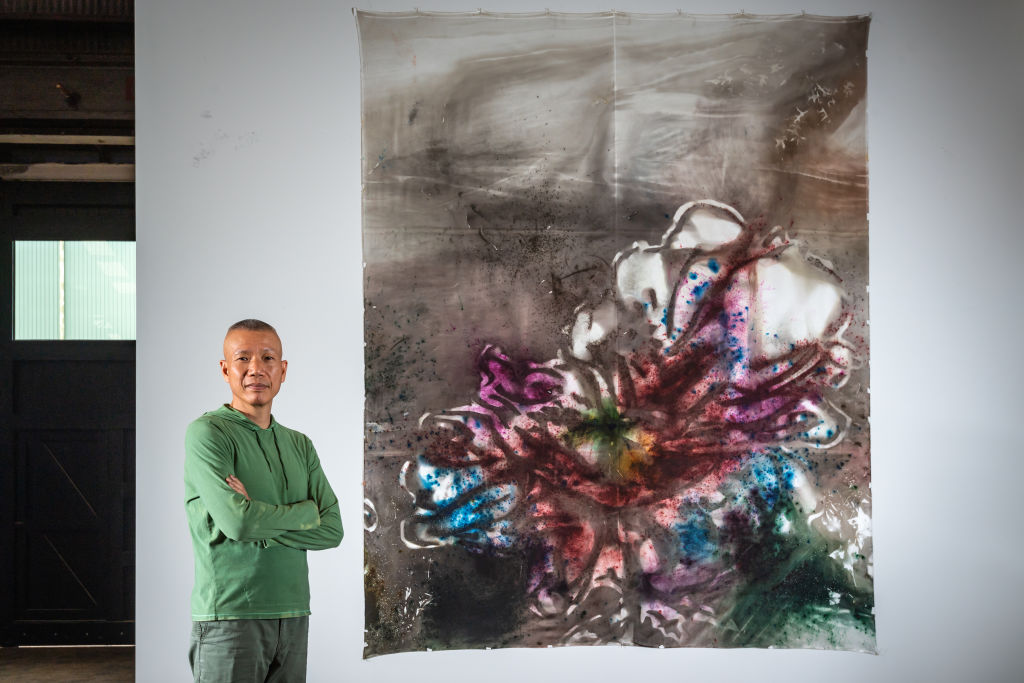
Luckily, it all went according to plan, which doesn’t always happen; an event of Cai’s in Brisbane called for 99 metal boats to be filled with alcohol and set alight, but they notoriously toppled over and sank.
On this March day, he explained to the Melbourne onlookers that he’d be running away quickly after he ignited the fuse. Everyone there had the option to wear face masks and earplugs. In Cai’s world, art is not for the faint-hearted. But when the smoke cleared, the delicate panels of fabric collected from the ground revealed unbearably beautiful depictions of the peony, portraying the flower’s blooming process and referencing ancient Chinese culture, for a 31-metre piece he’s titled Transience II (Peony).
Poetically, Cai described the whole process as one akin to making love. Following this analogy, does he think that this romance with pyrotechnics will eventually result in a breakup?
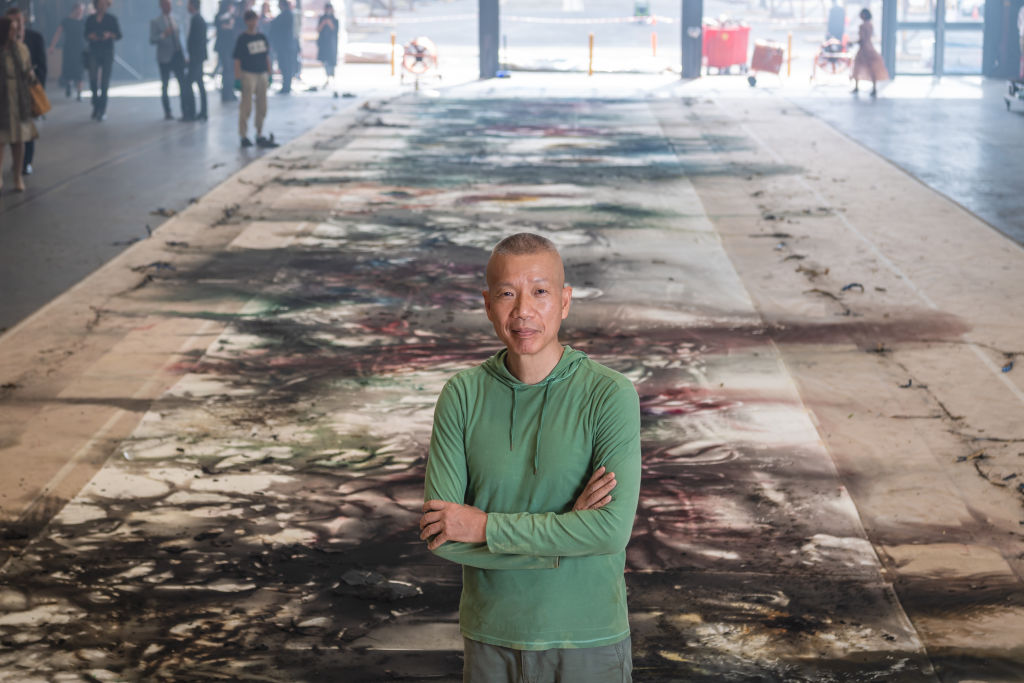
“Artists may have a breakup with artworks,” he says through a translator. “Because of the possibility of a breakup, you feel nervous, because they do not always forever belong to you. It’s not your personal possession. It’s an individual’s life itself.”
Even though Cai has entered artist-as-superstar territory, his ability to find common ground with everyone is clear in a story he recounts, of the time he visited Jerusalem. There, he asked to meet a rabbi, “because I look for a shaman or a spiritual medium wherever I go, to have a conversation with me.”
As the rabbi described his belief in God, Cai realised that he was describing one aspect of his own Sky Ladder concept, too, whereupon a 500-metre tall “ladder” was suspended in the air by a giant balloon and ignited to create the illusion of a ladder reaching the heavens.
“I regard all the ancestors from different cultures as my own,” he says simply. “I’m not someone who’s constantly thinking about China and Chinese art.”
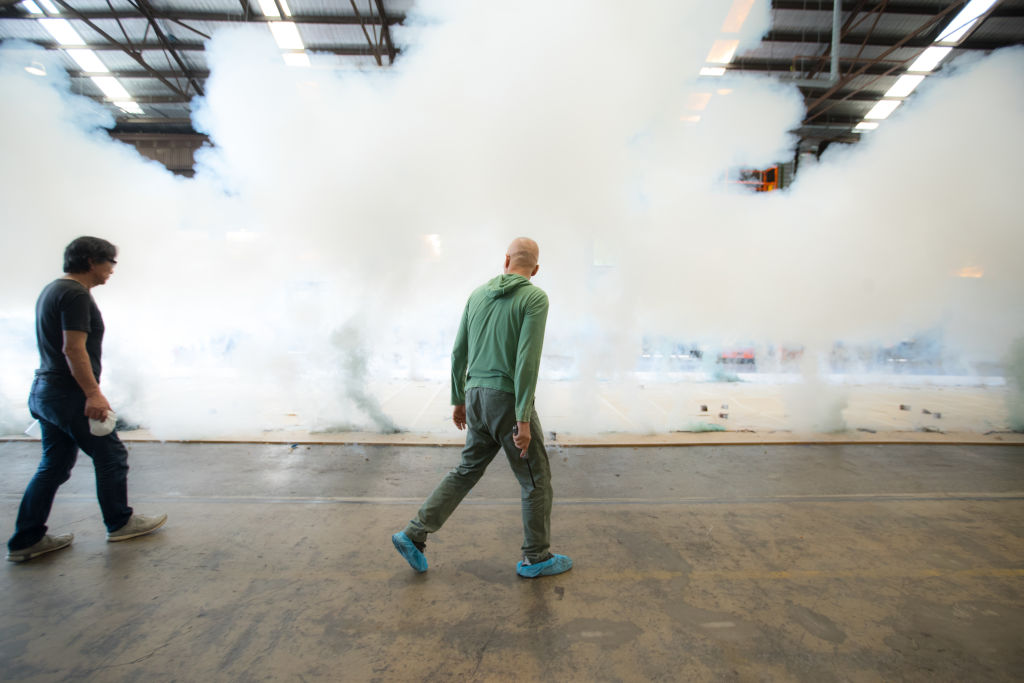
It’s clear that Cai is very much a global citizen and literally invites the world into his space: when I remark at how wonderful his Gehry house sounds, he tells me I must visit. It’s no pipe dream, either, since he plans to one day turn the property into a foundation and invite the public to see it. For now, he’s still stumbling upon the joy within its walls.
“I always make new discoveries, living in this house designed by Frank. It brings you lots of surprises, and you feel compelled to make history together with it. For instance, between the guest house and the main house there is a large pavilion, and earlier I thought that was a waste of space.
“But to this point, everyone including myself, my family, my studio staff and visiting guests all love the pavilion. Sitting between two houses, it connects two sceneries. It is not a house that ends with the completion and design and construction – you only start discovering how clever and wonderful it is once you have moved in.”

One can imagine Cai walking around it with his wide-eyed sense of wonder, which he clearly has retained despite reaching celebrity status. Of course, he would argue the accuracy of this description.
“I’m still boring; just the same. I went to [Crown] Casino. No one ever disturbed me there. No one asked me to take photos. An artist is just a person who loves painting. I don’t ever forget that. I always ask myself, ‘Is this the [same as when] I was a little kid, does my feeling still exist today?”
The Melbourne Winter Masterpieces presentation of Terracotta Warriors: Guardians of Immortality and Cai Guo-Qiang: The Transient Landscape is on at NGV International, May 24 – October 13.
We recommend
States
Capital Cities
Capital Cities - Rentals
Popular Areas
Allhomes
More
